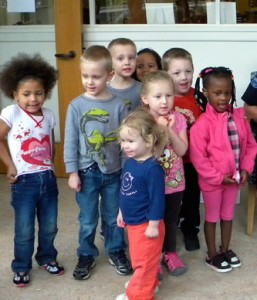
WASHINGTON – Today, the U.S. Department of Agriculture (USDA) released its annual report, Expenditures on Children by Families, also known as the Cost of Raising a Child. The report shows that a middle-income family with a child born in 2013 can expect to spend about $245,340 ($304,480 adjusted for projected inflation*) for food, housing, childcare and education, and other child-rearing expenses up to age 18. Costs associated with pregnancy or expenses occurred after age 18, such as higher education, are not included.
While this represents an overall 1.8 percent increase from 2012, the percentages spent on each expenditure category remain the same. As in the past, the costs by location are lower in the urban South ($230,610) and rural ($193,590) regions of the country. Families in the urban Northeast incurred the highest costs to raise a child ($282,480).
“In today’s economy, it’s important to be prepared with as much information as possible when planning for the future,” said USDA Food, Nutrition and Consumer Services Under Secretary Kevin Concannon. “In addition to giving families with children an indication of expenses they might want to be prepared for, the report is a critical resource for state governments in determining child support guidelines and foster care payments.”
The report, issued annually, is based on data from the federal government’s Consumer Expenditure Survey, the most comprehensive source of information available on household expenditures. For the year 2013, annual child-rearing expenses per child for a middle-income, two-parent family ranged from $12,800 to $14,970, depending on the age of the child.
The report, developed by the USDA Center for Nutrition Policy and Promotion (CNPP), notes that family income affects child-rearing costs. A family earning less than $61,530 per year can expect to spend a total of $176,550 (in 2013 dollars) on a child from birth up to age 18. Middle-income** parents with an income between $61,530 and $106,540 can expect to spend $245,340; and a family earning more than $106,540 can expect to spend $407,820.
“Food is among the top three expenses in raising children,” said CNPP Executive Director Angela Tagtow. “Parents have the challenge of providing food that is not only healthful and delicious, but also affordable. We have great resources such as ChooseMyPlate.gov that features tips to help families serve nutritious and affordable meals. I encourage parents to check out our Healthy Eating On a Budget resources, 10-Tips Nutrition Series, recipes, and MyPlate Kids’ Place, which features digital games for kids to get engaged themselves in healthy eating.”
For middle-income families, housing costs are the single largest expenditure on a child, averaging 30 percent of the total cost. Child care and education was the second largest expense at 18 percent, followed by food, which accounted for 16 percent of the total cost.
“Variations by geographic region are marked when we look at housing, for example,” said study author and CNPP economist Mark Lino, Ph.D. “The average cost of housing for a child up to age 18 is $87,840 for a middle-income family in the urban West, compared to $66,240 in the urban South, and $70,200 in the urban Midwest. It’s interesting to note that other studies are showing that families are increasingly moving to these areas of the country with lower housing cost.”
In 1960, the first year the report was issued, a middle-income family could have expected to spend $25,230 ($198,560 in 2013 dollars) to raise a child until the age of 18. Housing was the largest child-rearing expense both then and now. Health care expenses for a child have doubled as a percentage of total child-rearing costs during that time. In addition, some common current-day costs, such as child care, were negligible in 1960.
Expenses per child decrease as a family has more children. Families with three or more children spend 22 percent less per child than families with two children. As families have more children, the children can share bedrooms, clothing and toys can be handed down to younger children, food can be purchased in larger and more economical quantities, and private schools or child care centers may offer sibling discounts.
[poll random]







Heard this weekend: “Kids are God’s way of saying you have too much money and get too much sleep.” Yep.